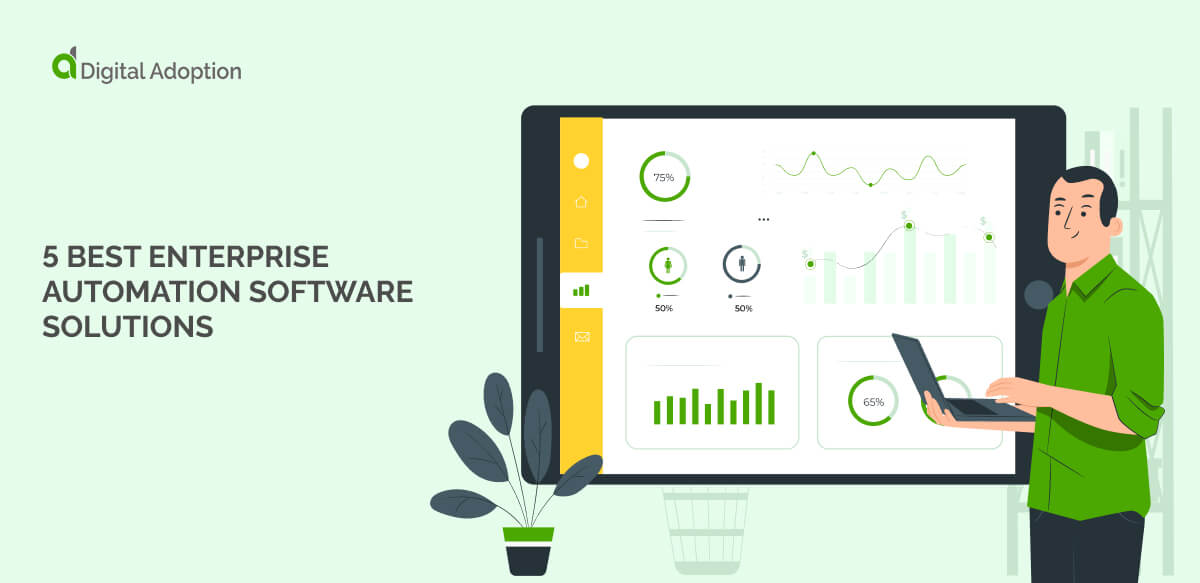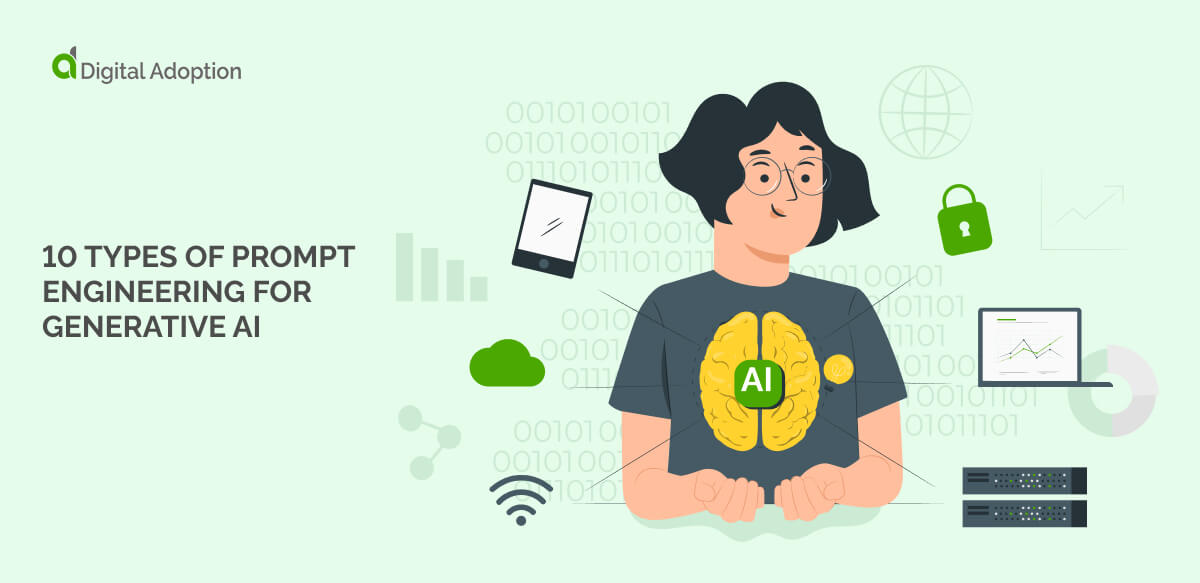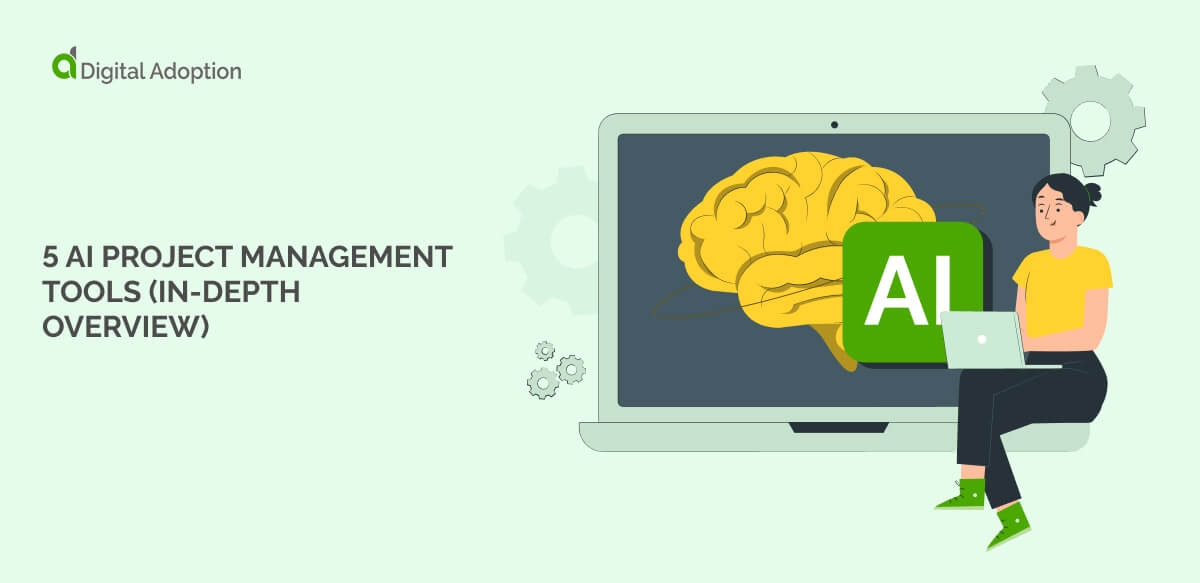CIO or CMO — who’s more important?
It’s an impossible question to answer. You need both in a successful enterprise.
It’s the same with digital adoption vs. digital transformation. Both are essential to success in today’s technology revolution. And we’ve got 3 golden rules for each so you can hit your digital goals with ease.
Digital adoption vs. digital transformation: what is adoption?
Digital adoption vs. digital transformation is a comparison that gets made a lot today.
How are they different? How do they impact each other? Whose responsibility are they in a traditional enterprise structure?
We’ve covered before what digital adoption is and how it can help today’s businesses to survive and thrive in the digital revolution.
But for the sake of easy comparison, digital adoption is:
“achieving a state in which digital tools are being used as intended, and to their fullest extent.” WalkMe
What does that mean? Well, it’s not just digital usage. Adoption and usage are two different things.
Digital usage is exactly that; it’s users being physically able to access digital tools and use them in some way.
Digital adoption goes much further than that. The digital tools are being used as intended. They’re fulfilling their purpose, what they were designed to do.
And they’re being used to their fullest extent. The users are experts at using these tools. They are familiar with all the features and can use them in their fullest capacity, to get the desired benefits.
3 golden rules of digital adoption
1. Focus on UX
The user experience (UX) is “everything”, says Don Norman, “that touches on your experience with the product,” as a user.
A weak UX is going to hinder adoption, because users will tire of struggling to find resources or perform tasks. This causes frustration, poor productivity and performance, and even churn.
So you need to make the UX of your digital tools as seamless as possible. Training plays a big part in this.
2. Use a digital adoption tool
Traditional training methods have poor knowledge retention rates. However, a Digital Adoption Platform (DAP) can greatly improve the training process.
The DAP is an algorithmic guidance layer that’s placed over the top of any digital system. It uses machine learning to understand user behavior and provide a personalized user experience.
It accelerates the learning curve by providing contextual guidance actually at the time of need. It can also auto-complete repeat tasks for the user and provide insightful suggestions based on pre-set goals.
“Without digital fluency, organizations are unable to realize the full impact of innovative technologies.” Accenture, Digital Adoption Report
3. Define relevant KPIs
Determining relevant KPIs is essential to tracking digital adoption success. But amazingly, more than 85% of companies can’t quantify the impact of their digital initiatives, according to McKinsey’s Digital Quotient analysis.
Clint Boulton at CIO.com advises CIOs to, “assess adoption rates and business impact relative to traditional operating modes.”
We say, look at user satisfaction, performance outcomes, and feature benefits. And keep track regularly.
“Adoption should be measured no less than weekly. It’s the only way to gauge and generate momentum.” Aaron Goldman, CMO.com
Digital adoption vs. digital transformation: what is transformation?
Digital adoption generally refers to the singular process of adopting a specific digital tool or system.
For example, if your enterprise introduces a new CRM, it would be digital adoption that would fully integrate it into business processes and company culture.
Digital transformation, on the other hand, refers to the ongoing change process that an organization undergoes to remain relevant and competitive in the digital world.
Manish Dudharejia writes in Entrepreneur that digital transformation, “refers to the efforts needed to rewire the entirety of operations across an organization — in accordance with the constantly-evolving digital world.”
He goes on to point out that, “for this to work, a successful approach to digital adoption is crucial.”
3 golden rules of digital transformation
1. Focus on digital adoption
If adoption doesn’t happen, neither can digital transformation. As far as digital adoption vs. digital transformation goes, it’s not an either/or situation. First comes adoption, then comes transformation.
“[Digital adoption] is a vital concern for any organization in the process of installing or implementing a new service or tool.” Philip Kushmaro, CIO.com
2. Recruit strong leadership
For any major change to happen successfully, you need strong leaders to stride out where others will follow.
Of course, you need executive buy-in. But your leaders can be of any rank and title. Organizational change management guru, John Kotter, calls them the “guiding coalition”.
When it comes to digital adoption vs. digital transformation, your strong leadership team must be believers and champions of digital. They must lead by example, embodying the vision and benefits of proposed changes.
3. Create a culture of change
Finally, resistance to change is a huge barrier to all things digital. So your digital transformation is going to be so much easier if you focus on creating a culture of change within your organization.
Address the culture and you make it easy for digital adoption to occur on an ongoing basis, thereby facilitating your digital transformation.
When your users are receptive to digital change, its implementation is easy. Add a Digital Adoption Platform into the mix and success is pretty much guaranteed.

 FACT CHECKED
FACT CHECKED











